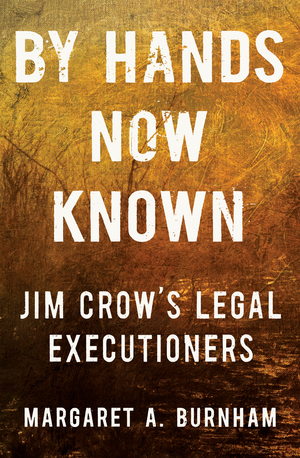Weekend Books — By Hands Now Known: Jim Crow’s Legal Executioners

The many, and systematically horrible, events in the southern states of America over many years in the middle of the last century are described in Margaret Burnham’s new book By Hands Now Known: Jim Crow’s Legal Executioners.
The phrase ‘Jim Crow’ is an American shorthand for the more than six-decade-long southern racial order that followed Reconstruction after their Civil War. The term is also usually equated with segregation, but it was far more than that. It also included the disenfranchisement of Black voters which removed any political power, left them in a disadvantageous labour market and imposed a requirement for social deference to white citizens.
Any historical work on the subject matter of this era in American history is bound to attract close scrutiny, and deserves to have it, not least for its continuing relevance in a modern society so affected by what went on before.
Margaret Burnham is a civil rights attorney and legal scholar. In 1977 she became the first Black woman appointed to a judgeship in Massachusetts. She is presently directs the Civil Rights and Restorative Justice Project at the Northeastern University School of Law.
The work of the Project is to chronicle the history of racially motivated homicides in the southern states between 1930 and 1970. Over 1,000 such murders have been discovered and recorded so as to prevent their becoming lost to history. Around 30 cases are discussed in detail in this book.
The details of the murders are shocking, often very violent death followed on the instant after an apparently insignificant slight, or socially inept comment.
Perhaps the most compelling and depressing factor that separates this era of unrestrained murder from anything comparable is the widespread involvement, or indifference, of those who were in authority in government and in the legal system — including, it has to be said, juries.
By Hands Now Known: Jim Crow’s Legal Executioners by Margaret A. Burnham. Published by W.W. Norton & Company, 328 pp.








